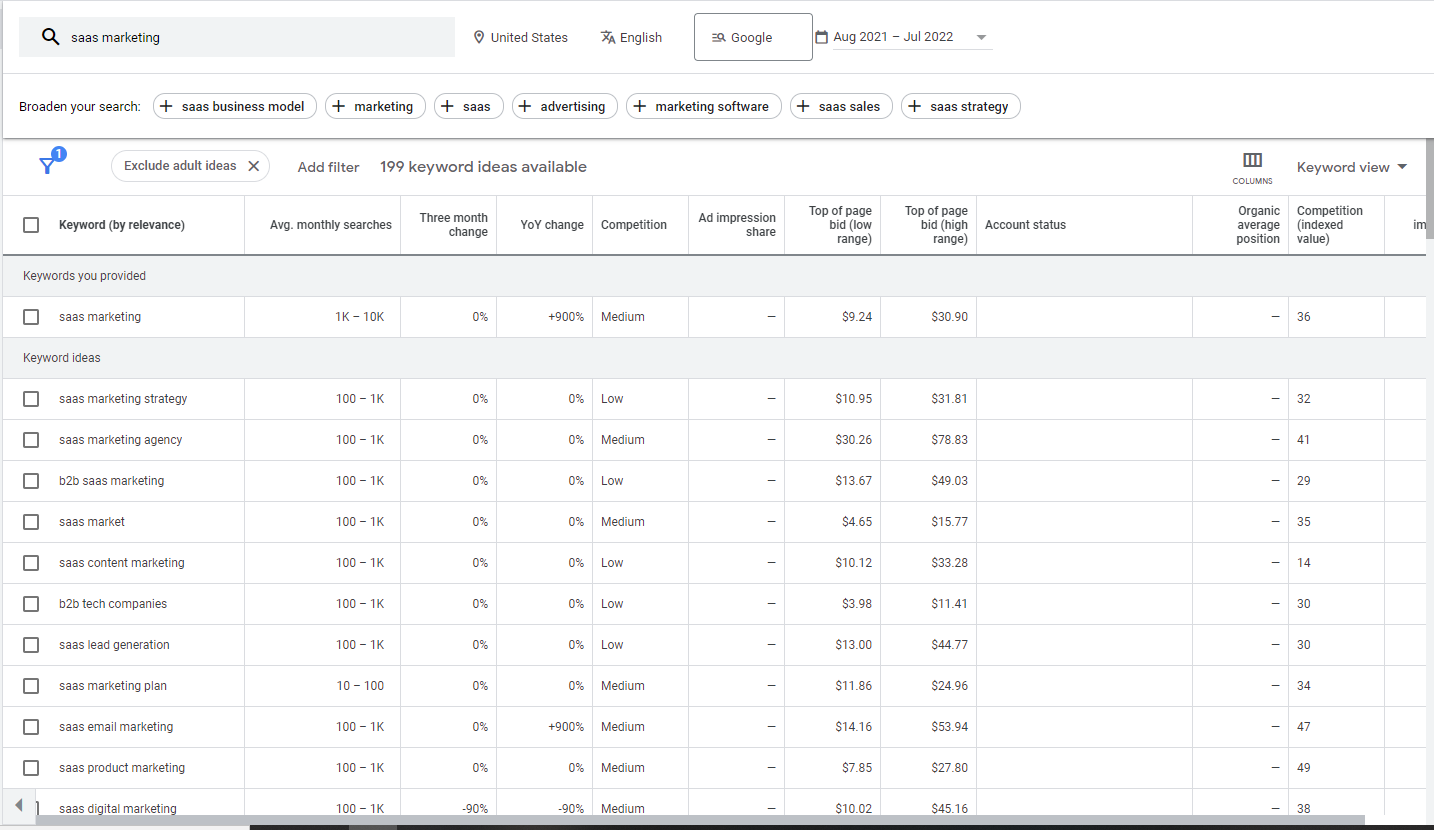Content marketing is still the number one strategy for young companies looking to attract awareness for their brand and products.
This sentiment rings even more true for burgeoning industries, such as the SaaS industry.
While the SaaS (software-as-a-service) model requires different considerations from marketers, the underlying strategy of attracting, retaining, and converting leads into lifelong customers remains the same.
Ultimately, a SaaS content marketing strategy fulfills all those needs while providing leads with valuable information to improve their user experience with your products. Whether you choose white label services, an agency, or an in-house writer, any SaaS business can greatly benefit from SaaS content marketing.
Let’s explore the essential characteristics of a SaaS content marketing strategy and outline seven ways to improve its overall success.
What is SaaS Content Marketing?
SaaS content marketing is a strategy to attract, convert, and retain customers throughout the lifecycle of their subscription.
SaaS content marketing considers special aspects of the subscription-as-as-service model, which relies on repeat and loyal subscribers to maintain steady revenue.
As a result, SaaS content marketing emphasizes a mix of sales copy, case studies, free demos, and educational content that assists users with their software.
Furthermore, SaaS content marketing strategies frequently involve re-engagement and email nurturing campaigns with quick, educational content to keep people engaged with their business. So why is content marketing such a valuable strategy for SaaS companies compared to traditional marketing strategies, such as print or multimedia advertisements?
Why is Content Marketing Important for Saas Companies?
SaaS content marketing is important for the following reasons:
- It educates customers, which leads to higher retention
- It helps customers understand more about the underlying software
- It expands brand awareness
- It positions software companies as thought leaders and solutions providers in their industry
- It helps nurture leads throughout their sales funnel for higher conversions
How Do You Measure SaaS Content Marketing?
Before we begin discussing SaaS content marketing strategies, it’s important to outline what goals and metrics you want to use to measure your campaign’s success. Ultimately, there are three metrics we like to focus on when considering the cost, value, and ROI of a campaign over its lifecycle:
- Lead acquisition cost (LAC): How much does it cost to acquire a new lead?
- Lead conversion ratio (LCR): How many of those leads convert into customers?
- Customer lifetime value (CLV): What is the average value of one customer over its lifetime?
By subtracting the CLV of a customer by the cost it takes to acquire that customer (LAC/LCR), you can determine the ROI of each marketing campaign. This will determine which content acquisition channels demand more spending and work.
With this in mind, let’s discuss seven steps you can take to improve your SaaS content marketing strategy.
7 Steps to a Successful SaaS Content Marketing Strategy
1. Create a Buyer Persona
First, you want to create a customer avatar representing your ideal customer. Since you’re a software provider, there are a few demographic and psychographic categories you can use to narrow down your target audience, including:
- Job title: do they have executive decisions to purchase software?
- Industry vertical: would their company benefit from your software suite?
- Social media: what is their company’s social media presence like?
- Pain points: how could they benefit from your service?
You can get more granular with your research and ask sales reps which demographic factors lead to higher conversion rates.
2. Find the Right Mix of Keywords
Next, you’ll need to find the right mix of keywords that apply to customer pain points and fit your underlying strategy.
There are several tools you can use to start building out a list of keywords, including Google Keyword Planner (free), Answer the Public (free), and tools like SEMrush or Ahrefs (paid).
Using these tools, there are several ways to uncover keywords using the following strategies:
- Searching for broad match keywords using a seed phrase

- Searching for related questions

- Pulling up keywords competitors are ranking for
- Searching through search engine results pages for related terms
Split your keyword buckets into two categories of keywords based on informative and commercial intent. Most likely, your informative keywords will share the following characteristics:
- Question phrases: what, when, where, why, and how
- Long-tail phrases: keywords that are specific to your products and have low competition
- Branded keywords: keywords related to your software and business name
Commercial keywords will not be as relevant to our overall content strategy, sans some lower funnel content.
3. Create Content for Each Stage of the Funnel
Once you have a list of keywords at your disposal, it’s time to create content for each stage of your sales funnel. Typically, we like to segment content based on the three purchasing stages below.
Awareness Stage
At this stage, leads come across content that alerts them to a possible problem or inefficiency in their business and outlines ways to improve or solve that problem. Content may be found organically over the web through a search engine query or shared organically via social media. Content examples include:
- Evergreen guides
- eBooks
- White papers
- Blog posts
- Guest posts
Interest Stage
Leads do more research about your business and how it can solve their problems. At this stage, content should be designed to exhibit topical authority and lead them closer to a purchasing decision. Content examples include:
- Tutorials
- Demos
- Testimonials
- Case studies
- Reviews
Decision Stage
Leads decide whether or not to contract your business for their software needs. All content at this stage is designed to finalize a sale by exhibiting authority and trustworthiness. Content examples include:
- Demos/trails
- Webinars
While the sales team will take the most action at the decision stage to finalize a sale, there are several ways to improve your conversion ratio using simple strategies.
4. Implement Conversion Rate Optimization (CRO) Strategies
Content that doesn’t convert is like a car that won’t run; it’s nice to look at but won’t get you very far.
However, it may not be your content that’s not attracting the right leads or leading to conversions, but your conversion strategy.
Here are some valuable experiments to try and improve your conversion ratio:
- A/B test your highest trafficked landing pages with new headlines
- Implement text-based CTAs inside of blog posts and A/B test different locations to implement these CTAs
- Test out pop-ups or interstitials and monitor their conversion and bounce rates
- Use more prominent call-out buttons at the top or bottom of important pages to entice clicks
- Offer free products/promotions or trials via email or newsletter signups on your website
- Use a CRM or project management software to assign follow-up tasks to sales staff with active leads
- Implement chatbots with forms that collect lead information
- A/B test different buyer personas to see which sets of leads convert the highest
5. Nurture Subscribers with Content
Of course, one of the best conversion rate optimization strategies you can implement is a drip campaign using existing content that appeals to your buyer persona. Using contact information collected from your form and CRM, you can use an email service to deliver automated emails to leads promoting content that deals with a specific problem their business is trying to solve.
Offering promotions or discounts for opening automated emails and encouraging engagement with your drip campaign may slowly improve lead retention and conversion over time.
Ideally, you should also use drip campaigns to re-engage lost leads or unsubscribers after a certain period to see if you can still recapture old leads who have had a unique customer experience with your business.
6. Expand Content Distribution Strategies
On the other hand, if your SaaS content marketing strategy fails to capture leads or bulk volume for your website, you should consider other distribution sources.
The old “set it and forget it” model where you wait for Google to rank your expert content won’t really work if you’re not acquiring links or shares for your content.
Consider promoting your content using the following strategies:
- Advertisements: Ads over Google and social media that target high-traffic, informative keywords may be a great way to gin up awareness for your brand more organically than a traditional search ad.
- Social media: Sites like LinkedIn and Twitter offer great places to promote your business, its brand, and products as innovators in the software field.
- Link building: Acquiring links from high-traffic sites, whether it be resource blogs or guest posts on software-related websites, is a great way to promote your company’s brand and build quality links to content.
- Email: As previously stated, drip campaigns are a great way to engage with leads using existing content.
7. Consult Your Data
Finally, analyze what pieces of content are working and which are not. Google Analytics and Search Console are free tools that allow you to analyze important metrics on your site, including page views and bounce rate.
In addition, metrics like total sessions and average session time filtered by traffic source also provide critical information on which channels are delivering you the highest number of leads to your website.
This information will inform you which channels deserve the highest budget and the most focus regarding promotion.
Finally, there are several content analysis tools\ designed to help you track which pieces of content are receiving the highest engagement and leading to the most sales.
Conducting a SaaS content marketing strategy is no different from many traditional industries but requires higher long-term engagement to retain customers for long periods.
Ultimately, a SaaS content marketing strategy puts your company in the best position to attract, nurture, and convert leads into lifelong customers for your business.



